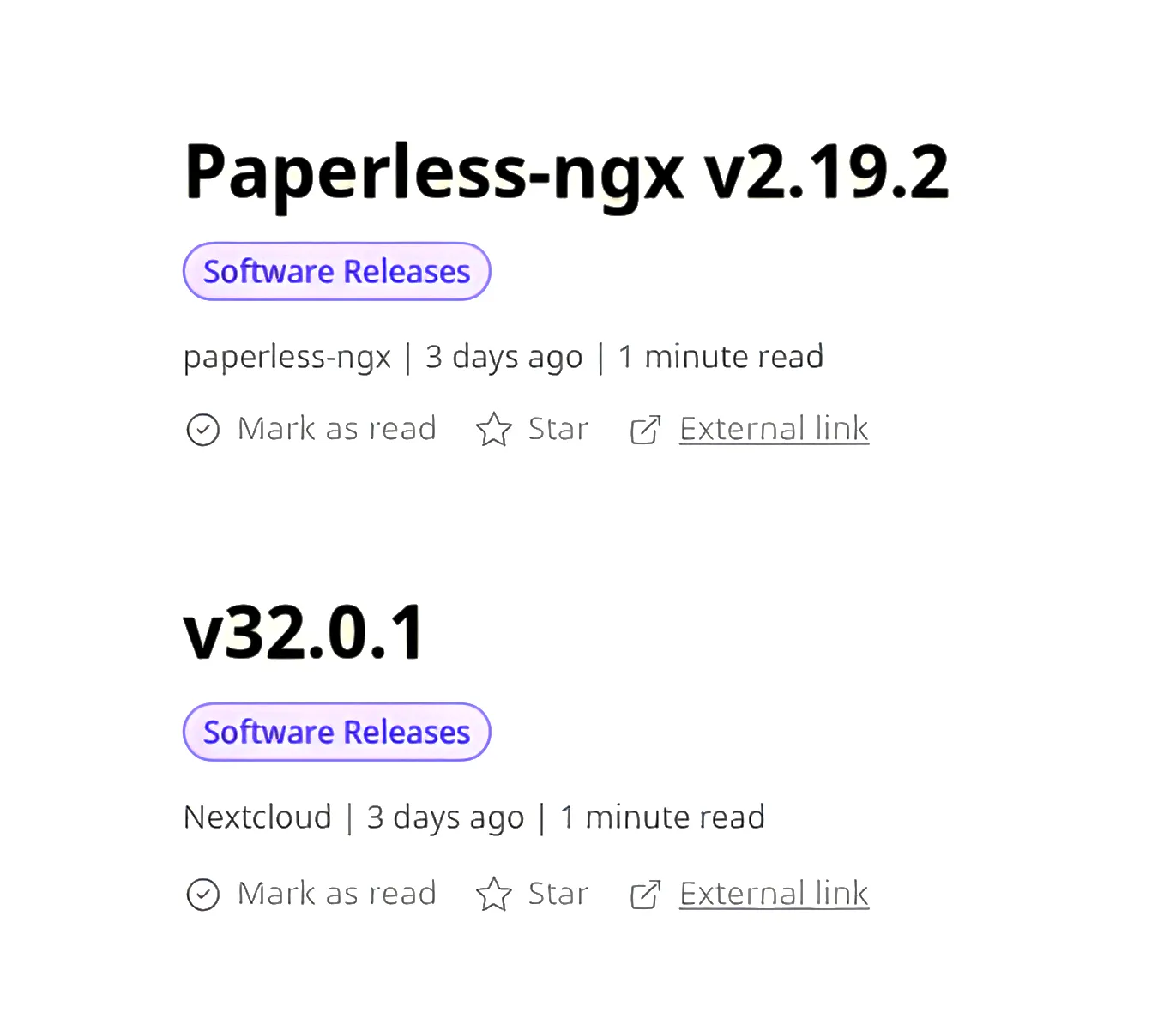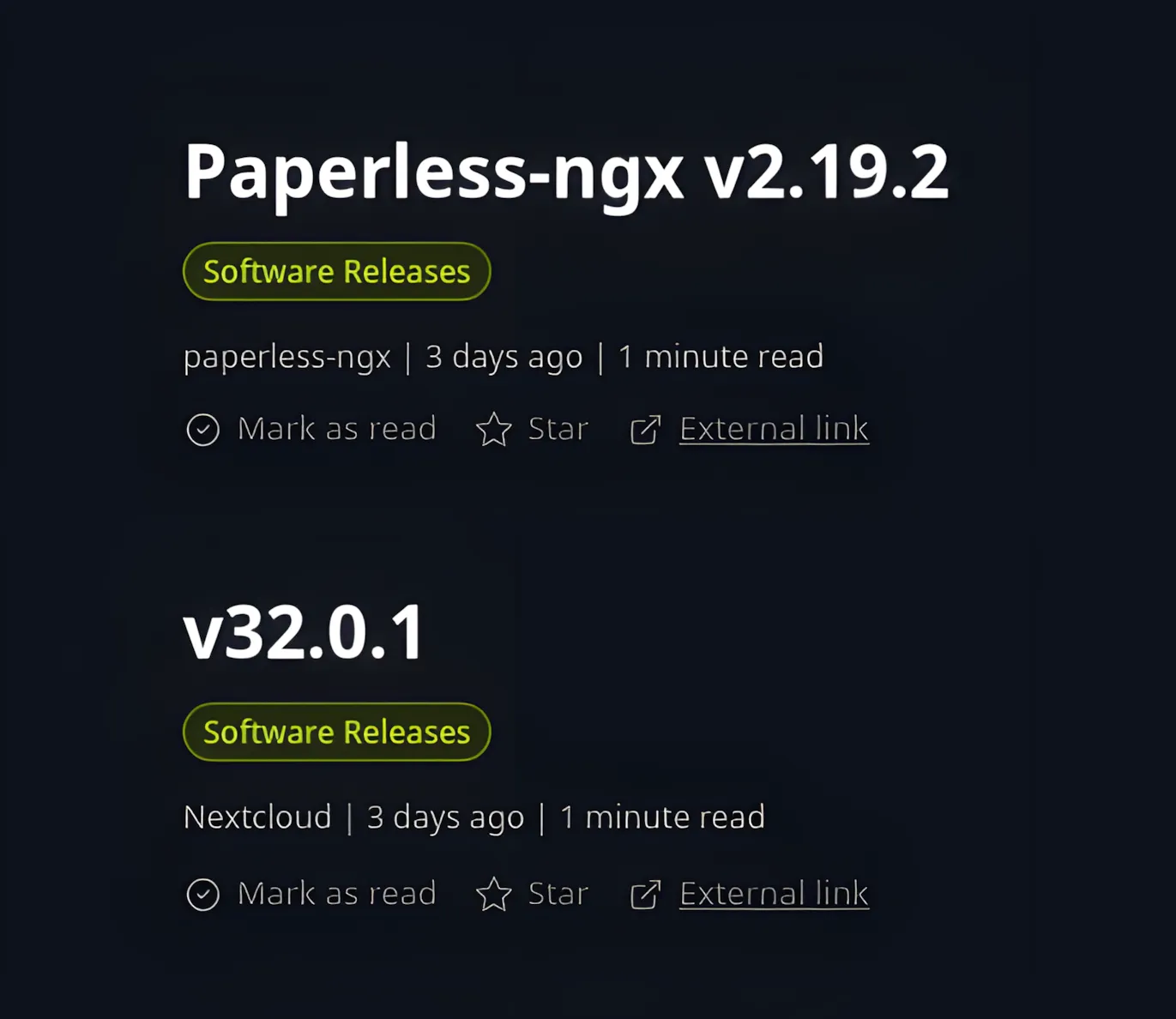Updates and Patch Management
This is the most tedious part of any homelab. Some people choose to be lazy and install some kind of service like watchtower, or just flat out don't patch anything at all.
I like to opt-in for a more involved approach though.
Debian
Most of my VM's and LXC containers are using Debian 13 as their base operating system.
Unattended Upgrades
I use the unattended-upgrades package to do security updates for my homelab.
This is sort of lazy! But I decided that I want security updates as soon as possible, as the Debian security updates are designed to be applied as soon as possible in a stable way.
The worst thing that could happen is that a Debian update breaks from an unattended-upgrade, and I view the log /var/log/unattended-upgrades/unattended-upgrades.log and reverse the breaking changes until a fix is developed.
Here is my simple config that is applied to all machines when I bootstrap them:
Unattended-Upgrade::Origins-Pattern {
"origin=Debian,codename=${distro_codename},label=Debian-Security";
"origin=Debian,codename=${distro_codename}-security,label=Debian-Security";
};
Obviously this kind of automatic updating is lazy and shouldn't be encouraged. If this was a production environment, I would not be patching machines this way at all and would opt for some of the better methods below.
Ansible
For automatic patching for non security updates, I like to use Ansible. It completely automates the way I patch my machines, and will alert me of failures along the way.
I have 2 pretty simple Ansible playbooks that cover this. apt-check.yaml and apt-upgrade.yaml.
apt-check.yaml
---
- name: Check for available APT updates
hosts: debian_hosts,debian_containers
tasks:
- name: Update APT package index
apt:
update_cache: yes
cache_valid_time: 3600
changed_when: false
register: apt_update
until: apt_update is succeeded
retries: 3
delay: 5
- name: Check for available updates
command: apt list --upgradable
register: apt_updates
changed_when: false
environment:
LC_ALL: C
- name: Extract upgradable packages
set_fact:
# Create an ACTUAL list of package names
upgradable_packages: >
{{
(apt_updates.stdout_lines | default([]))[1:] |
map('split', '/') | map('first') |
reject('==', '') | unique | list
}}
- name: Show available updates
debug:
msg: |
Available updates:
{% for pkg in upgradable_packages %}
- {{ pkg }}
{% endfor %}
when: upgradable_packages | length > 0
- name: Show no updates available
debug:
msg: "No available updates"
when: upgradable_packages | length == 0
apt-upgrade.yaml
---
- name: Update and upgrade apt packages
hosts: debian_containers
#become: yes
serial: "{{ batch_size | default('100%') }}" # Controls rolling updates
tasks:
- name: Update apt package index
ansible.builtin.apt:
update_cache: yes
cache_valid_time: 3600 # Only update if older than 1 hour
register: apt_update
until: apt_update is succeeded
retries: 3
delay: 5
- name: Upgrade packages (all updates but not dist)
ansible.builtin.apt:
upgrade: yes
autoremove: yes
autoclean: yes
register: apt_upgrade
async: 300
poll: 15
- name: Check if reboot required
ansible.builtin.stat:
path: /var/run/reboot-required
register: reboot_required
- name: Reboot host if needed
ansible.builtin.reboot:
msg: "Rebooting after kernel update"
connect_timeout: 5
reboot_timeout: 300
pre_reboot_delay: 15
post_reboot_delay: 30
when:
- reboot_required.stat.exists
The workflow is usually to run the apt-check.yaml playbook to see what kind of packages will be updated/if there even is any. Then manually search up what these updates do and if there are any breaking changes that might conflict with my current configurations, and then to finally run the apt-upgrade.yaml playbook - put my feet up and watch the magic happen.
Other Updates
Some software isn't in Debian repositories and needs to be updated manually whether that is through a GUI or re-compiling from source.
RSS
RSS or real-simple-syndication feeds are a great way to get the latest updates/notifications for new software updates.
It is as simple as getting the GitHub releases page for the software you are using, then adding .atom onto the end of the URL.
This will create an RSS feed for that software which will show up in your RSS reader.
Now on the next update that the comes from the software maintainer, you can browse it and read the latest patch notes and any breaking changes if any exist.
This helps when patching, since you know what to expect and can become a better systems administrator.


Updating ZSH Globally With Ansible
I love ZSH. So here is how I update all my VM's, LXC containers and VPS's with Ansible:
---
- name: Sync .zshrc files to hosts
hosts: debian_hosts,debian_containers,remote_hosts
gather_facts: true
vars:
local_zshrc: "{{ lookup('env', 'HOME') }}/.config/zsh/.zshrc"
remote_zshrc: "{{ ansible_env.HOME }}/.config/zsh/.zshrc"
tasks:
- name: Ensure remote zsh config directory exists
file:
path: "{{ remote_zshrc | dirname }}"
state: directory
mode: '0755'
- name: Copy local .zshrc to remote hosts
copy:
src: "{{ local_zshrc }}"
dest: "{{ remote_zshrc }}"
mode: '0644'
# ------------------------------------------------
- name: Update .zshrc on webserver
hosts: pkgcache
gather_facts: false
tasks:
- name: Copy .zshrc
copy:
src: "{{ lookup('env', 'HOME') }}/.config/zsh/.zshrc"
dest: "/var/www/webserver/static/zsh/.zshrc"
mode: '0644'
Why Manually Applying Patches Matters
A good example of this recently was an update to my RSS reader Miniflux.
In a release they listed that this update had a breaking change and that you should run some SQL commands to fix them.
Without seeing this patch note, I would have been stuck wondering why my app was no longer working.
If I was using something like watchtower, then I would have been screwed.